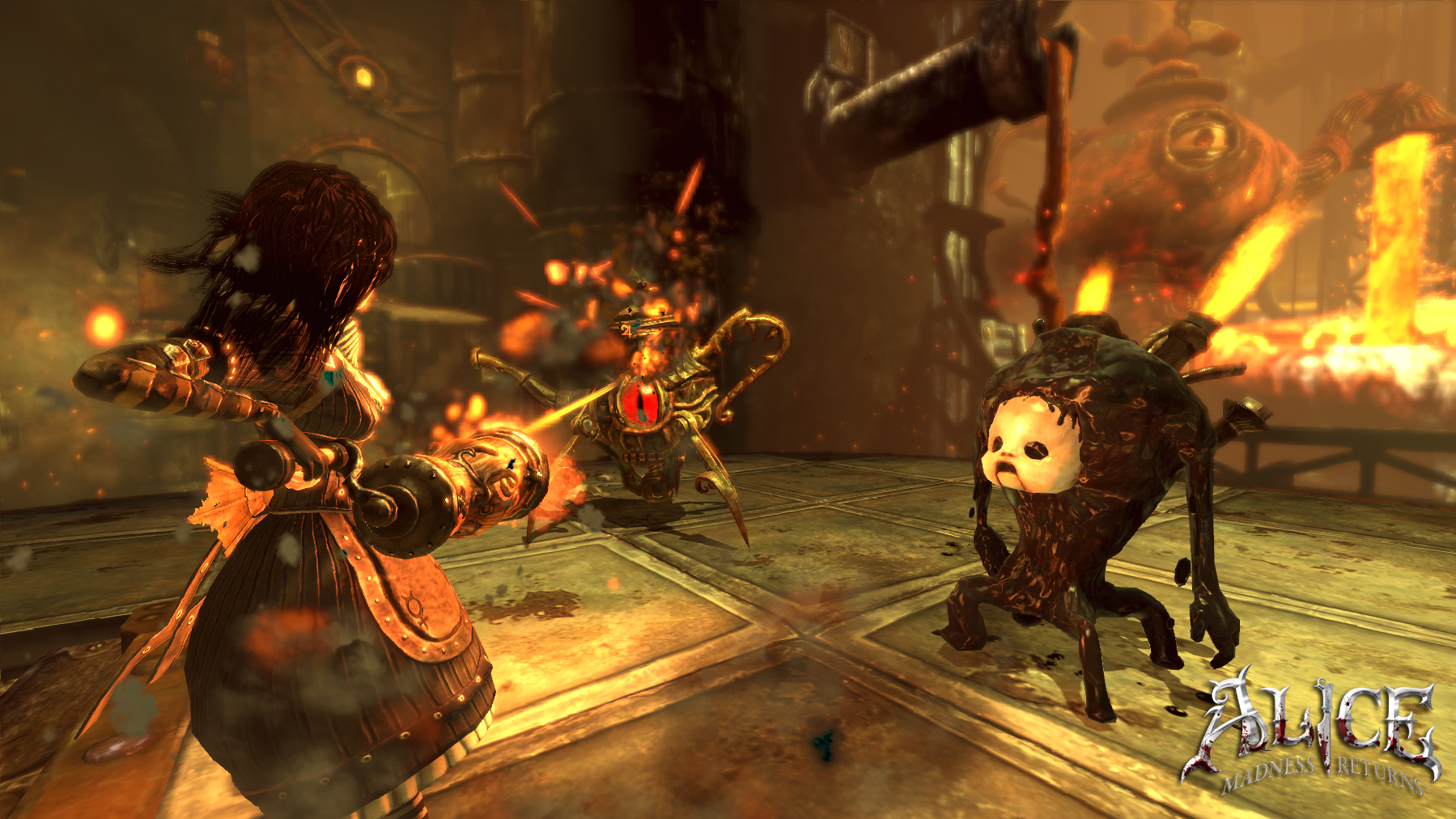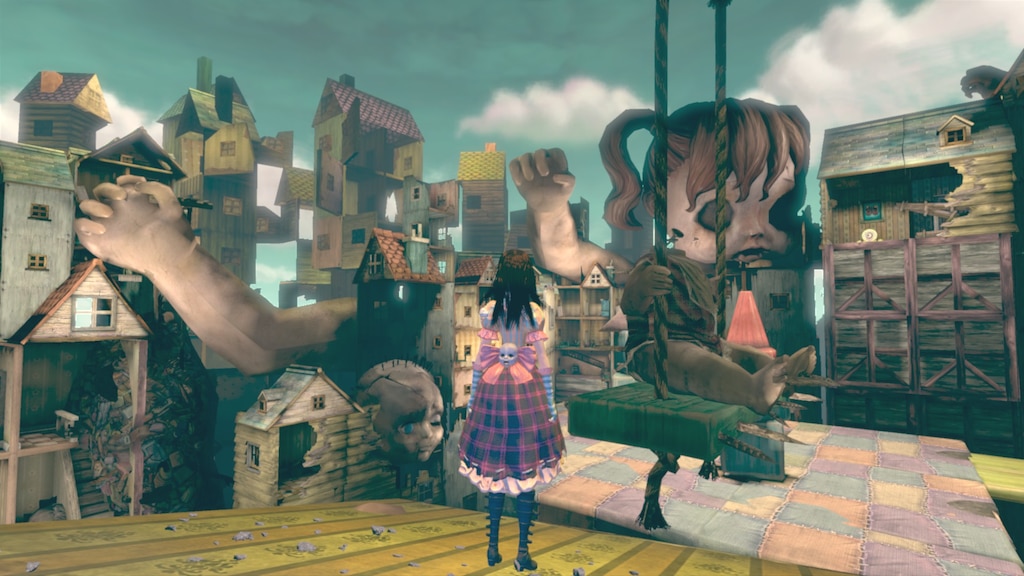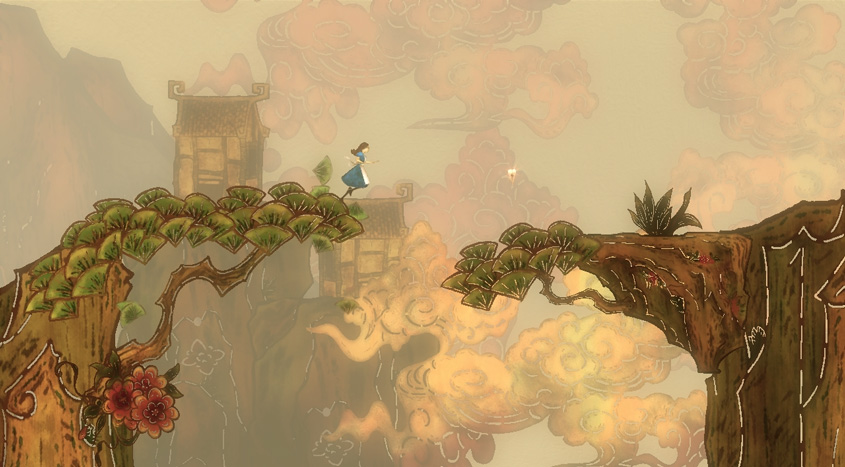
https://store.steampowered.com/app/19680/Alice_Madness_Returns/
Alice: Madness Returns is an action-adventure game developed by independent studio Spicy Horse and released by Electronic Arts in 2011, based on the well-known tale Alice in Wonderland, but with much darker settings. It is the sequential to American McGee’s Alice. It is an amazing game of incredible world design incorporating a highly completed aesthetic system which ties the map, the character and objects perfectly into a cohesive and immersive experience for the player, with a simple yet captivating mechanism that challenges both the actions and puzzle-solving skills of the player.
The Elemental Tetrad
Story
The main character, Alice Liddle, was a girl suffering from mental illness due to the loss of family in a fire. Due to her medical conditions, she was kept in a psychiatric clinic after the fire, and then stayed in an orphanage under Dr. Angus Bumby’s custody. The main story line of the game takes place in two worlds – the real world and the wonderland where Alice would fall into when her illness relapsed, with the latter one being the main background for the gameplay.
Mechanics
The main mechanics of the game is action-based which sometimes incorporates puzzles. The player controls Alice in a third-person prospective to move, jump or attack the monsters. The game is divided into different chapters which contain visually stimulating maps of stylistic themes. To complete each chapter, the player needs to control Alice to explore and then follow the path in the map, jumping around platforms and dodging traps, while fighting monsters emerged from the wonderland. The most interesting part of the mechanism is the settings of the obstacles and enemies which the player can overcome by tackling the different abilities and weapons that Alice possesses. For example, Alice is able to shrink (same as the setting in the original tale) after drinking the magical medicine, which allows her to enter places with limited space, and also allows her to see things invisible to normal creatures such as hidden platforms. Additionally, Alice would collect different weapons along her way, from the close-range melee Vorpal Blade, the long-range gun Pepper Grinder, to the grenade like Clockwork Bomb, with each of them in designed stylistically that fits perfectly into to the dark fantastic world setting. The player needs to strategically switches between weapons fighting monsters. Sometimes, weapons are also used to activates triggers so to open up certain paths. For example, the player would need to put Clockwork Bomb on a trigger and get to the door before it explodes, while shrinking to see the invisible platforms.


Aesthetics



The aesthetics of the game is completely awe-striking, with there being various themes for the maps in different chapters, each with its own appeal. From the surreally beautiful card bridge in the sky to the nauseous castle made up of flesh and organs, the player can literally have the experience of falling from the heaven to the hell in one second. The artists made use of different elements that complement each theme to design the architecture, the natural environment, the traps, the objects and enemies so as to provide the players with an immersive experience to the highest degree as if they have gone into the wonderland themselves. The changing themes also ensures that the player would never get bored even with such a long gameplay time. Rather, the player can always expect something new moving into a new chapter, as if each chapter is like entering into a different world. As the main setting of the game is on the darker side, there are more chapters with themes that can make certain players uncomfortable, such as the Doll House which pictures an abandoned slum with creepy dolls that can almost trigger the Uncanny Valley reaction. Yet for players like myself who are into gothic styles, this is absolutely beautiful (and gross at the same time).


It is worth noting that besides the majority of the game being 3D, in the chapter of Oriental theme, the game in which the player goes into a scroll of picture in which there are similar platforms and triggers like the ones outside, but all in 2D. This illustrates how the game designer makes use of different aesthetics to achieve the same action-based gameplay to make the game more enjoyable yet still consistent.
Technology
There are no exceptional technological breakthrough about the game as the game mechanism mainly involves simple movement of jumping and running, and the weapon attack is also rudimentary. However, the graphics of the game is considerably realistic and appealing in the time when the game was released.
The Lens of Elegance
The game has a simple mechanism that is intuitive to learn – find and follow the path, while clearing obstacles that hinders one to do so, yet with deliberate design of the maps, it is able to give the player an enjoyable experience. The levels are set such that the player would need to find the most suitable weapon or skill to use in order to proceed with the game. Along the gameplay, there will be some new elements introduced such as new weapons, but the total number of weapons or skills will still remain small and easy to remember. The complexity of the game is achieved through designing the levels cleverly with similar basic structures instead of giving the player too many things to remember.
The Lens of Curiosity
One major element about the game that intrigues the player is the different themes of the maps, as the player can expect each map to be in a different theme – Underwater world, Card Bridge, Oriental World, etc. After the completion of each chapter, the player would be curious about what the design of the next chapter would be, just like Alice who follows the rabbit into the wonderland, wondering what kind of world the rabbit is heading to.
The Lens of Story
The story of the game is not that interesting, except for its dark theme as contrasted to the original story. The main storyline can be explained in a few sentences, and the story is revealed to the player progressively as the player completes each chapter, in cutscenes of a few minutes. There is no drastic character confrontation or very unexpected twist of the story. Additionally, as the cutscenes are played in between gameplay which lasts for hours, it is easy for the player to forget about the last cutscene when watching a new one. However, besides the real life storyline, the player also witnesses the destruction of the wonderland through the gameplay, mirroring the destruction of Alice’s inner world of imagination as she falls back to the reality, which is more subtle but also more impressive.
The Lens of Time
With an average length of 14 hours to finish the whole game, this game gives the player an immersive experience in the world of wonderland. There will be multiple autosave checkpoints in each chapter before and after the player completes each small task, which can take up to 30 minutes, or 10 minutes for the shorter ones. Instead of a casual game that the player can play on the way to work or in between breaks, or game that can be saved at any time, the game requires the player’s attention for a long time in order to have the best experience.
Conclusion
If you have not played it, please give it a try. This is absolutely amazing.
